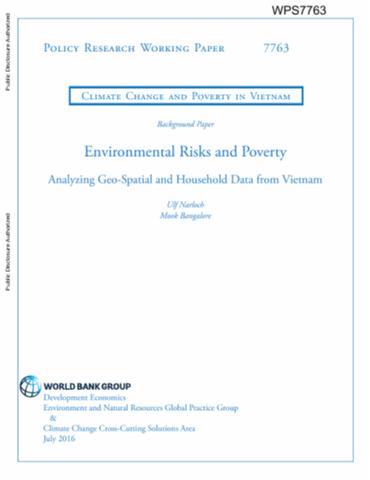Resource information
This study combines high-resolution, geo-spatial data and household data from the Vietnam Living Standard Measurement Surveys in 2010, 2012, and 2014 to investigate the relationship between environmental risks and poverty. Using recently developed data on air pollution, tree cover loss, land degradation, slope, rainfall and temperature variability, and flood and drought hazards, the study shows: (i) at the district level, there are hotspots of high poverty and environmental risks; (ii) ethnic minorities and poor households are much more exposed to multiple environmental risks than other groups, and also within rural and urban areas poorer households live in communes exposed to higher environmental risks; and (iii) environmental risks relate to lower consumption levels, but less so to lower consumption growth over time. Altogether these findings suggest that Vietnam’s poor are disproportionally exposed to environmental risks, which can result in livelihood impacts that in many ways go beyond consumption. In light of growing pressures due to population growth, economic development and climate change, green growth actions, ecosystem-based adaptation, and land-use planning could be important strategies to reduce the environmental burden on poor people.


